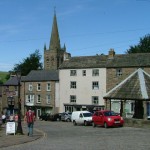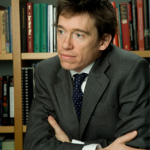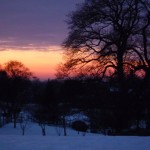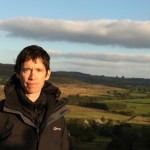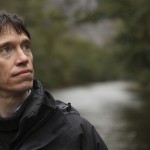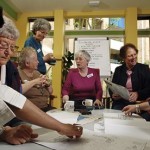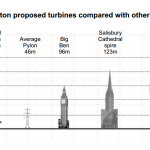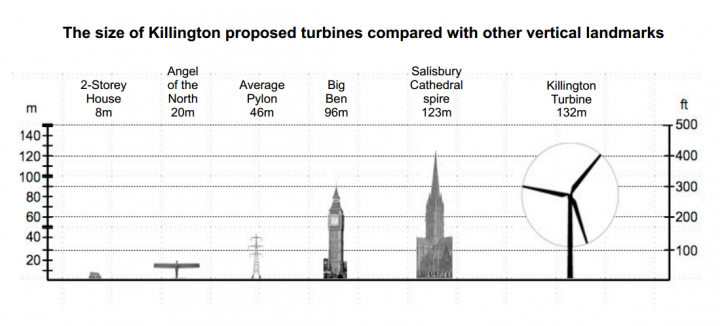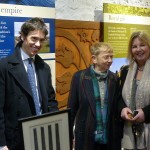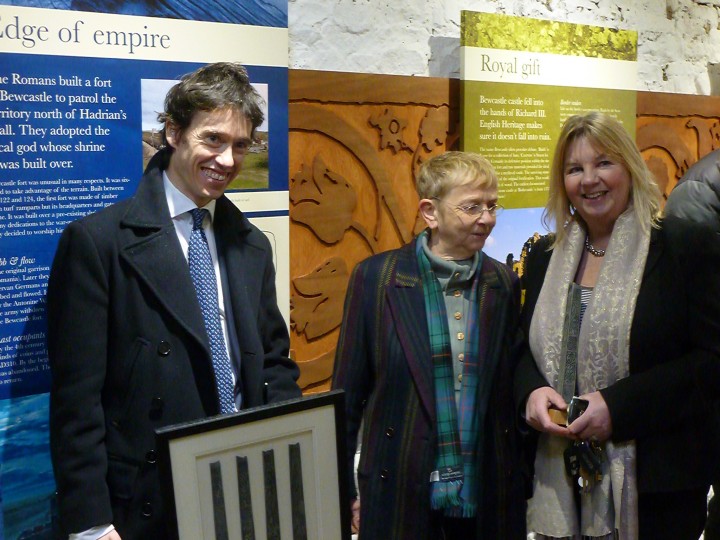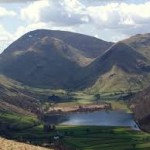
The idea of ‘England’ and ‘Scotland’ is immensely powerful in the year of the referendum. Perhaps this is why it took me so long to understand what is now two was once three. I’m half-English and half-Scottish. I spent years living and working on borders from the Balkans to Afghanistan. And I’m now the MP for the only constituency with border in its name. But over the last five years, walking, writing, and finally, making a BBC documentary – which begins next Sunday on BBC 2– I have slowly come to terms with the ‘Middleland’: a nation with its own Kings, languages, traditions of art, literature, and forms of religion, that existed for over a thousand years. It extended from the Firth of Forth in the North, to the Humber in the South, stretching over what is now all of Southern Scotland and Northern England. It has never entirely disappeared.
I have got to know Willie Tyson, for example, who lives beside a mountain called Blencathra, and says ‘yann, tan, tethera’, when counting sheep instead of ‘one, two, three’. The name of the mountain and the numerals are both from the ancient Middleland language of Cumbric, which is quite different to English or Scottish Gaelic. The Middleland is a sparsely-populated territory of open moorland, and peat – an upland terrain of small family sheep-farms, quite different from the Highlands of Scotland or the English South. And archaeology suggests that this was an egalitarian society, with no obvious centres of wealth and power, as long ago as 700 BC.
But Hadrian’s Wall ripped the Middleland in two. Flying over the wall with archaeologist, David Wooliscroft, I saw that the wall did not follow a great river, or mountain ridge. It cut, ruler-straight, through flat fields. (Archaeologists can still see the lines of the iron-age ploughs running under the wall). 15,000 Roman soldiers manned what was, in effect, an 84-mile long camp, for three hundred years. This colonial line tore tribes and families apart. And my experience as a Deputy Governor in Iraq made me feel the brutality of this foreign occupation. In the North-East there is evidence that the Romans cleared the entire native population out of the territory beyond the wall. And when the Roman soldiers withdrew, economic and governmental structures collapsed in an instant. The war-lords of the Middleland, who had been created under the Roman occupation, were sucked into civil war.
Then, after two hundred years of obscurity and chaos, there was a miracle. Within two generations from 630 AD, the pagan, illiterate, Kingdom Middleland – then called Northumbria – became briefly the greatest Christian civilisation of its time. It attracted and brought together Byzantine sculptors and Scandinavian jewellers, Catholic missionaries from Syria and Italy, and Irish ascetics. It changed our understanding of astronomy, of tides, and of the nature of history. It produced the finest sculpture in Europe; and masterpieces such as the illumination of the Lindisfarne gospels. This revolution in scholarship, spirituality, and art, stretched from the Firth of Forth, down to the Humber, and included Edinburgh as much as York. Even after Northumbria faded, a wonderful cross-border culture survived in the Kingdom of Cumbria, connecting Penrith to Glasgow, a Christian civilisation, deeply interfused with pagan Scandinavian symbols and mythology. (In Penrith churchyard, we filmed a cross decorated with a mythical Norse serpent).
The Kingdoms of the Middleland were destroyed first by the Vikings: we had to film a full Royal Marines amphibious assault crashing over the cold waves, to give a sense of the terror of a Viking attack. Then the English and Scottish Kings combined to crush what remained. When the Eastern Middleland attempted a final rebellion, William the Conqueror ‘harried the North’ killing a hundred thousand people; the Scottish King followed up, enslaving the survivors. The last independent King of Cumbria vanished sometime in the eleventh century. But even after the independent Kings had gone, a Middleland culture survived. Great monastic foundations expanded across both sides of the border, bringing new learning, and turning the fellside into pasture, and creating fortunes through the international sheep trade. (A single monastery could keep 20,000 sheep). As late as 1290, people on both sides of the border married each other, traded with each other, worked for the same nobles, and the same monasteries, and spoke the same Northumbrian dialect.
But the scar of the Roman wall had never entirely faded. In many sections it stood ten feet tall for more than a thousand years. All the early medieval maps of Britain showed the Roman wall. King William II of England put his new frontier forts precisely on the Roman line. (His successors pushed the border further North in the East, but in the West the Roman frontier remains to this day). The victory of the Scottish King Robert the Bruce at Banockburn in 1314, gave this artificial border, its final sinister life. Bruce, whose father had been keeper of English Carlisle, and whose family owned estates deep into Yorkshire, banned cross-border landholdings. The people of the Middleland were forced to choose to be English or Scots. It was forbidden for an Englishman to marry a Scot, or to enter Scotland without written permission. For the next three hundred years, the border destroyed the lives of everyone who lived alongside it – creating murderous raids, mafia-bosses fuelled by proxy war. (In the Bailey valley, I rode, drunk, stayed with and filmed families, who still celebrated their descent from border “reivers”: singing their ballads, and showing me their swords and gallows-trees).
And then, in 1604, the border vanished – the two halves were joined again under a single King. James “Sixth and First” tried to resurrect the Middleland as the ‘Middleshires’. Without the border, the violence ceased. The Middleland found a second Golden Age, as Walter Scott, and Wordsworth made it the central landscape of the European Imagination. New more nuanced cross-border identities re-emerged. In Longtown auction mart, a farmer told me, “My grandmother was from Scotland, she was a Scot, my grandfather’s from Northumberland, my wife’s from Durham city, I’m from Cumbria so I think I’m British.”
On September 18th, a referendum will determine whether this border, first invented by the Emperor Hadrian, becomes again the line of separation between two independent nations. But will anyone remember the culture and people that once reached – and still reach- across the modern border, linking Southern Scotland to Northern England? Will anyone remember the beauty and the glory of the Middleland?




